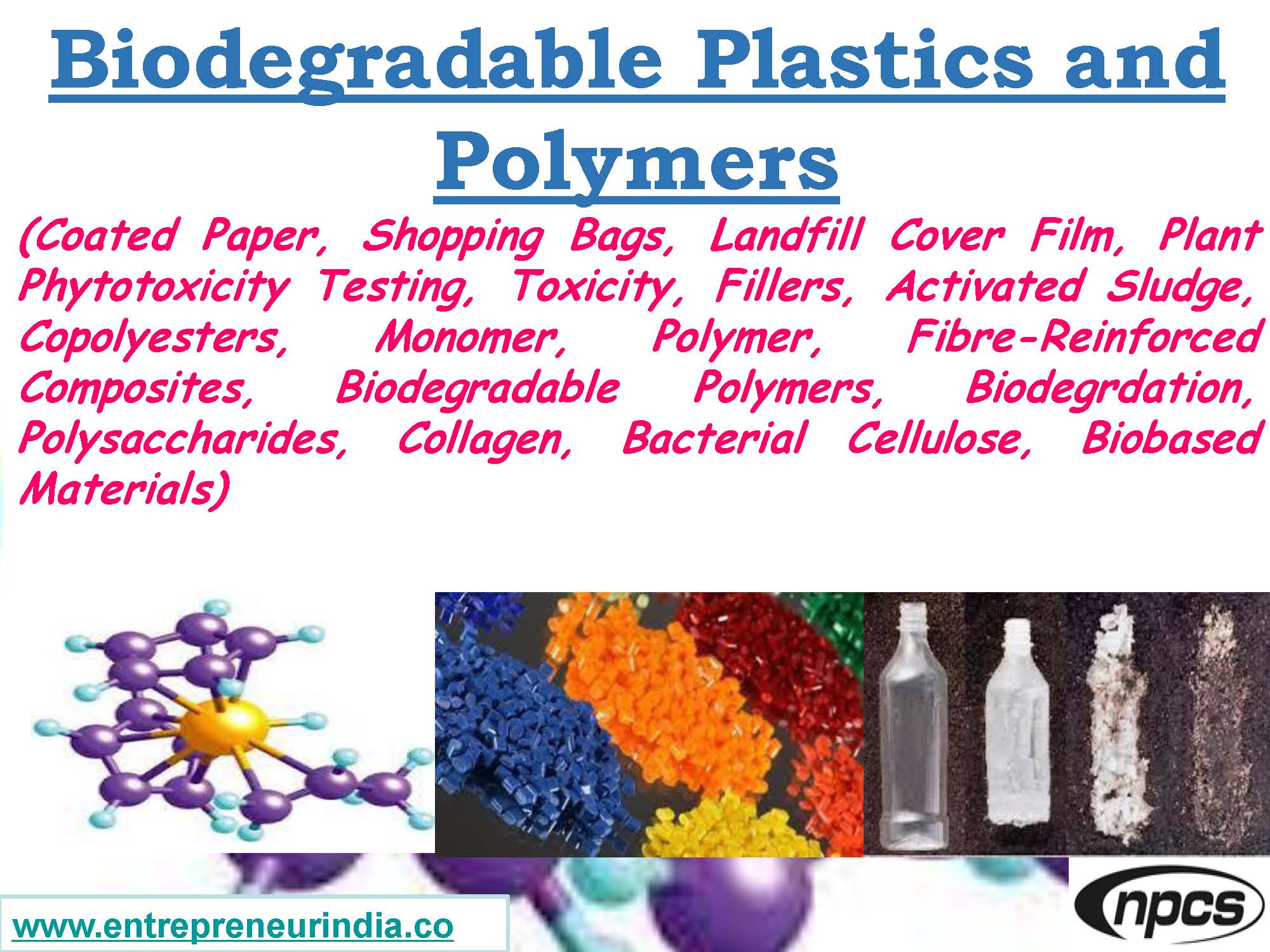
In a world grappling with plastic pollution and climate change, eco-friendly alternatives are no longer optional—they’re essential. Among these, biodegradable plastics and polymers stand out for their potential to replace conventional plastics without lasting harm to the environment. Derived from renewable sources or modified to break down naturally, these materials are being used in everyday products—from coated paper and shopping bags to agricultural films and landfill covers. Moreover, advanced testing methods such as phytotoxicity assessments and activated sludge trials ensure that these materials are safe for ecosystems. This article dives into the science, applications, and sustainability potential of biodegradable plastics and polymers across key industries.
Applications and Environmental Testing of Biodegradable Plastics and Polymers
The development of biodegradable materials involves complex chemistry and environmental science. By examining how these materials perform under real-world conditions—such as soil, water, and microbial environments—we can assess their impact and efficiency. Let’s explore their key applications and the technologies used to ensure biodegradability and safety.
Read More :Paper Composite Can
Coated Paper, Shopping Bags, and Landfill Cover Films
One of the most visible uses of biodegradable plastics and polymers is in packaging. Coated paper products, often lined with biodegradable PLA (polylactic acid), maintain durability while allowing for compostability. Shopping bags made from starch blends or polyhydroxyalkanoates (PHAs) provide the same convenience as plastic but decompose naturally in compost. Moreover, landfill cover films made from biodegradable polymers help control odor and leachate while breaking down over time—unlike polyethylene sheets. These innovations reduce long-term waste buildup and offer practical solutions for daily use and waste management alike.
Phytotoxicity Testing and Toxicity Evaluation in Plants
To ensure environmental safety, phytotoxicity testing is conducted to measure the effect of biodegradable materials on plant growth and soil health. This involves germination and root elongation tests using common species like lettuce or radish. Moreover, toxicity assessments extend to evaluating leachates for harmful chemicals that may be released during degradation. Unlike conventional plastics, well-designed biodegradable plastics and polymers show minimal to no phytotoxicity, proving safe for agricultural and horticultural applications such as mulch films and seedling trays.
Fillers, Additives, and Activated Sludge Degradation
The formulation of biodegradable plastics often includes fillers such as talc, calcium carbonate, or natural fibers to improve strength and reduce cost. However, these additives must not hinder biodegradability. Activated sludge testing simulates real-world wastewater environments, using microbial populations to assess how quickly and completely a material breaks down. These tests, standardized by protocols such as ASTM D5209 or ISO 14851, are crucial in confirming whether biodegradable plastics and polymers perform effectively in treatment plants and sewage systems.
Copolyesters, Monomers, and Polymer Chemistry
Many biodegradable materials are based on copolyesters—synthetic polymers created by combining two or more monomers to balance durability with biodegradability. Common biodegradable copolyesters include PBS (polybutylene succinate), PBAT (polybutylene adipate terephthalate), and PLA blends. Monomers like succinic acid and 1,4-butanediol are often derived from biomass. Moreover, the chemical structure of these polymers is engineered to hydrolyze or oxidize in environmental conditions, leading to their safe decomposition. The customization of biodegradable plastics and polymers at the molecular level allows fine-tuning of strength, flexibility, and degradation speed.
Fiber Reinforcement in Biodegradable Materials
To increase mechanical strength, natural fibers such as jute, hemp, flax, or kenaf are used to reinforce biodegradable polymer matrices. These fiber-reinforced biocomposites are ideal for automotive parts, packaging, and agricultural tools, offering both structural integrity and eco-friendliness. Moreover, they provide added advantages like lower carbon footprints and renewable sourcing. Unlike glass or carbon fiber composites, natural fiber-reinforced biodegradable materials break down safely, making them a key innovation in the sustainable materials sector. This integration reflects the advanced stage of design in the field of biodegradable plastics and polymers.
See Also : Cold Storage
Conclusion
The shift toward biodegradable plastics and polymers represents a crucial evolution in material science. From coated paper packaging and landfill films to advanced fiber-reinforced composites, these materials are revolutionizing the way we think about consumption and waste. Moreover, through rigorous testing like phytotoxicity assessments and activated sludge trials, we can ensure their environmental safety and efficiency. With innovations in monomer synthesis, copolyester development, and filler technologies, biodegradable solutions are becoming more versatile, scalable, and accessible. As industries adopt these materials, we move one step closer to a cleaner, more sustainable future.





